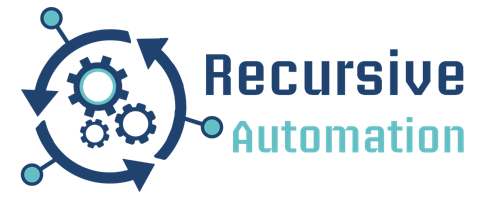Commercial solutions like Amazon’s Alexa or Google Home are great for run of the mill Digital Assistants. But what happens when you want to make your Digital Assistant work for you? This is what the Recursive Automation Blog is about, how to personalize your home automations so that you can make the most of technology in your day to day life.
My name is Andrew Crider and during the day I am a Business Intelligence Consultant. I’ve been a consultant for ten years now and my job can boil down to increasing ROI of data and information. The two easiest questions to get to that ROI is asking “Why do we want to automate?” and “How can we reduce your costs?” With these questions, I can understand what is important to the client, what problems they have, and how they would define success. When you browse /r/homeautomation on Reddit, you often get topics posted like “How do I automate my house?”. Very few posts on “Why do I want to automate my home” or “What am I trying to accomplish with automation?”
Answering those questions is what this series is about. First, we are going to help you formulate a plan how to define success and what you are trying to do with your setup. To help you implement your plan, we’ll cover a large variety of topics, including:
- Thought Experiments and How to approach your planning
- Review of Pre-Built and Commercial Solutions
- Sample projects
- Art to help you make you ensure that your automations are pleasing to the eye and ear and not simply utilitarian.
Our goal will be to ensure that you meet your success criteria instead of implementing something flashy.
Home Automation
Let’s start with Home Automation as the questions “Why” and “How” are easiest to understand in that context.
I’ve been working with automation products for the past five to six years, following a fairly common path:
- With Phillips Hue and LIFX bulbs, I built schedules so that my lights would go on and off automatically.
- I used Tasker (an application for Android Phones) to control those lights. My lights now responded to when I got calls or texts from my partner and when I exited and entered my house.
- I eventually bought a Google Home and an Amazon Alexa to add voice commands. This way I was living in the future! I was able to tell my house to turn on my TV, set lighting scenes, and control other electronics.
- Finally, I installed Home Assistant to build out more complex routines. Now my house responds automatically based around the time of day, physical button pushes, and other commands and sensor inputs.
Note that any links clicked above are affiliate links. The author may receive compensation from any purchases made through those links.
As I have refined my home automation over time, lights turn on in the morning, responds to numerous types of input, and provides audio responses.

I soon discovered that was fun, but it wasn’t very helpful in my overall goals of increasing productivity. So I went back to the drawing board. I needed to know why I was automating, which was to reduce the amount of barriers to me getting work done. I used Alfred on my Mac to build out tasks, used IFTTT for one off situations, and built Zaps by Zapier to automate my online workflows.
As I started refining my automations, I retired those that weren’t useful and iterrated over those that needed refinement.
Remember, Tony Stark built J.A.R.V.I.S as a constantly evolving system and it only got better over time. Don’t be afraid to change something because of new goals or requirements. Remember,
Perfect is the enemy of the Good.
Voltaire
Now we know the Why and How we are going to define success, let’s talk about how we are going to do it. In the business and software development world, we use Sprint Methodology to plan, implement, and then review our work product. We will use the same methodology here.
- We’ll make a list of our goals in our article: Genesis of our Automated Life. We’ll talk about how to build a backlog, how to do basic ideation, and how to manage your list.
- Identifying short term goals: What can I use to get started on today? What tools/products are out there to meet my basic needs? There are so many pre-built solutions, no reason to rebuild the wheel, we’re going to focus on the overall goals.
- What systems do I want to enhance? As we integrate our automations into our life, we find that they may fall short. We can always refine and improve our flows.
- Finally, we’ll evolve our solutions together, finding new things that we can build, and through recursion, we’ll make our own JARVIS, meeting our own goals.
Ready? Let’s get started! Read my blog post: Genesis of Our Automated Life to learn more about getting your life set up for automation.

